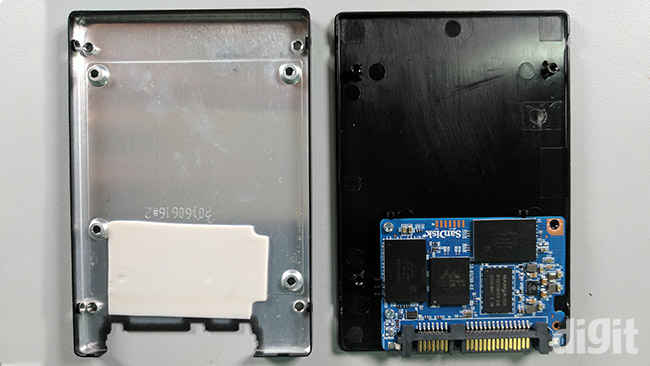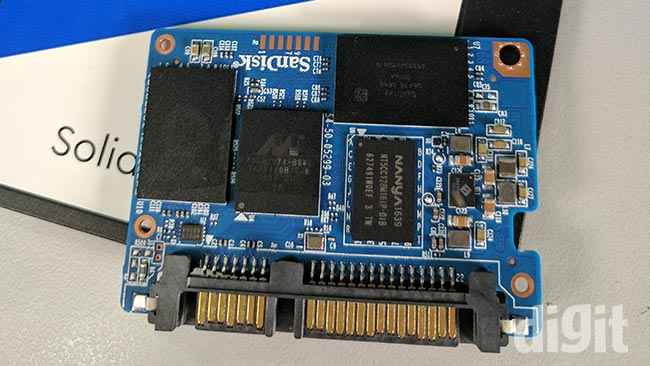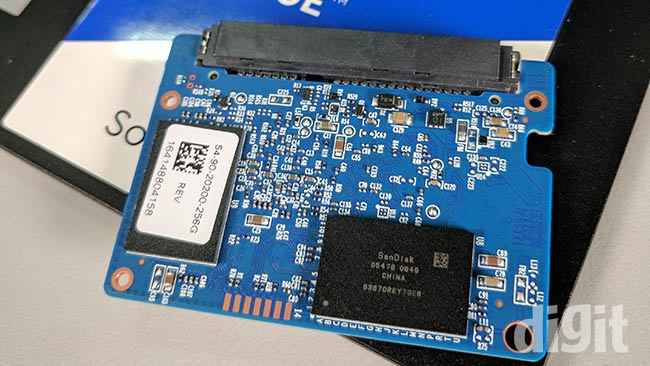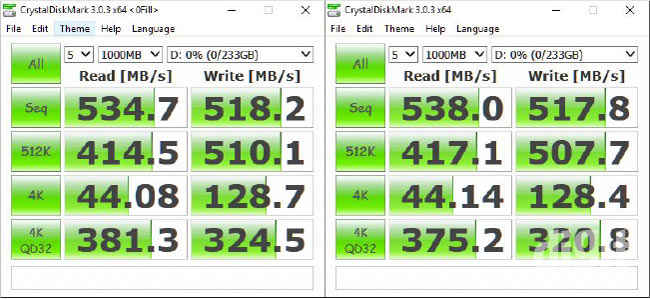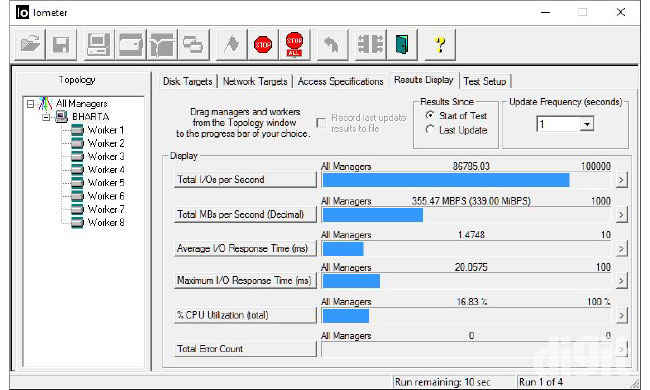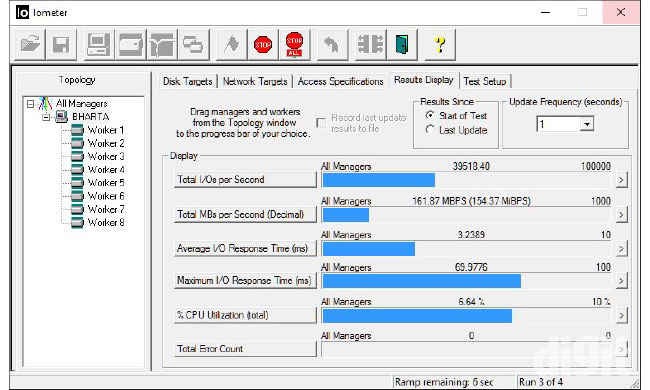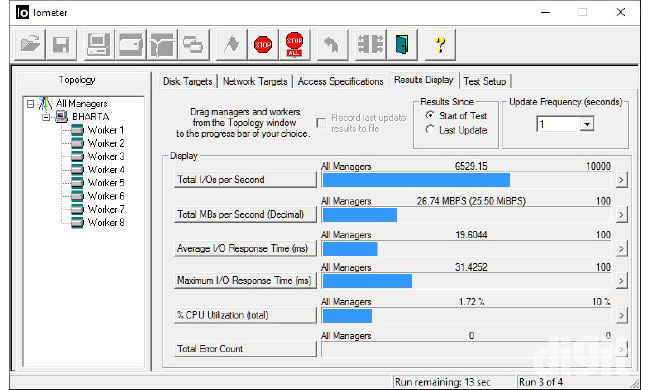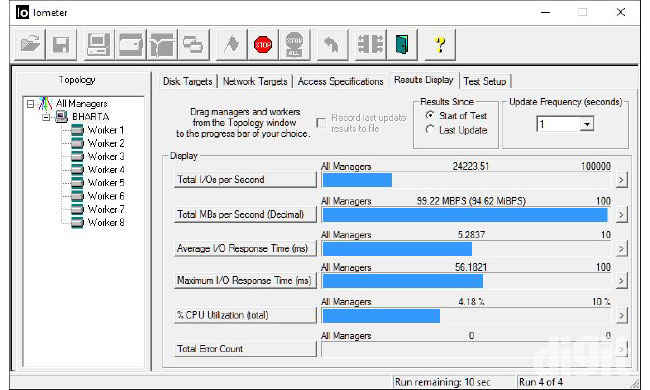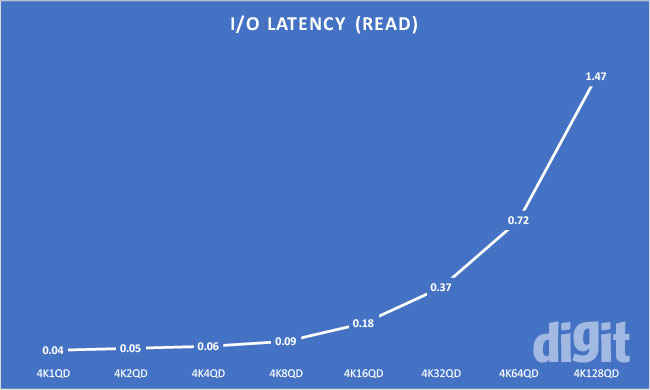WD Blue SSD 250 GB Review : WD is back in the SSD game
The WD Blue SSD offers good performance given that it is using TLC NAND but is about 600-700 bucks more expensive than other TLC SSDs in the price bracket. We’re talking sticker price here which for the 250 GB SKU is Rs.8,320 but you can find them online and at local retailers for roughly Rs.6,799. For something that’s an older SanDisk SSD with just newer branding, the price tag is a teensy bit higher. If you take that out of the picture, then the WD Blue SSD is a pretty good option in terms of performance.
Specifications
The WD Blue SSD makes use of the Marvell 88SS1074 controller with SanDisk’s 15nm TLC NAND. This configuration isn’t new as it’s the same as the SanDisk X400 SSDs but with different capacities. The closest SanDisk X400 in terms of capacity was the 256 GB SKU which used the same Toshiba 15nm TLC NAND (05478064G) packages and the WD Blue 250 GB unit has 4 packages arranged in the same fashion as well. The RAM on the WD Blue SSD is different from the one on the SanDisk X400 though. We see a Nanya NT5CC128M16IP-DIB which is a 128 MB DDR3L package clocked at 800 MHz while the X400 had a 256 MB Micron DDR3L package clocked at the same frequency. Needless to say, this change in configuration will require firmware modification as well and thus the performance of the WD Blue SSD will vary from that of the SanDisk X400. Let’s take a look at the specifications of this particular SKU.
|
WD Blue SSD 250 GB Specifications |
|
|
Interface |
SATA III 6 GB/s |
|
Controller |
Marvell 88SS1074 |
|
NAND |
SanDisk 15nm TLC |
|
RAM |
DDR3L 1600 128 MB |
|
Seq. Read Speed |
540 |
|
Seq. Write Speed |
500 |
|
Random Read IOPS |
97K |
|
Random Write IOPS |
79K |
|
Endurance (TBW) |
100 |
|
Active Power Consumption |
70 mW |
|
Peak Power consumption (Read) |
2350 mW |
|
Peak Power consumption (Write) |
3400 mW |
|
Idle Power consumption |
42-45 mW |
|
MTTF |
1.75 Mil Hrs |
|
Form Factor |
2.5–inch |
|
Height |
7 mm |
|
Weight |
37.4g |
|
Warranty |
3 years |
|
Price |
Rs. 9500 |
|
Cost per GB |
Rs. 38 |
Build and Design
Upon opening up the unit we see that the insides are practically the same as the SanDisk X400. It’s literally written right there on the blue solder mask. Given that you don’t need that many NAND packages to make up the 250 GB capacity, we see that the PCB is quite short. The bottom portion of the SSD i.e. the plate on the left in the below image seems to be aluminium with a thermal pad affixed to help transfer heat from the controller and the RAM to the metal body which, in turn, acts as a heatsink. The NAND packages don’t heat up as bad especially given the fact that they’re based on 15 nm process node and they’re not going to be stressed to their max at any given time. The other half of the body i.e. the one shown on the right is plastic. The PCB is secured in place with the help of two aluminium screws. None of the components on the underside make contact with the plastic body.
Up close, we get to see the Marvell 88SS1074 controller in the middle with a SanDisk NAND package (05478064G) to it’s left and the RAM package (NT5CC128M16IP-DIB) to the right. Another NAND package lies horizontally across the top. The Marvell 88SS1074 is the fifth generation controller from Marvell that supports not only 15/16 nm TLC but also MLC, SLC and 3D NAND. It’s built on a 28 nm CMOS process and supports TCG Opal, DEVSLP and 256-bit AES encryption.
The underside is pretty barren with just the remaining two SanDisk NAND packages.
Overall, we’d say that the drive has quite a standard build with no exceptional features that stand out. The controller is pretty good for SSDs using the SATA III interface and the entire thing is a SanDisk X400 in a new package. What remains to be seen is if the modified firmware and reduced RAM will affect performance by a significant margin.
Performance
Prior to conditioning the drives, we ran a few synthetic tests and the numbers came back reflecting WD’s spec sheet. Sequential read and write speeds were at 538 MBps and 518 MBps, respectively. 4KQD32 read and write speeds were at 381 MBps and 324 MBps.
We then moved on to conditioning the SSDs to achieve steady state. Post conditioning, sequential speeds dropped to roughly 339 MBps which is pretty decent for TLC NAND SSDs.
As for write speeds the speeds drop even further to about 162 MBps, and we’re still moving sequential data around.
So we finally moved to a lower queue depth and moved to random data and the speeds dropped a lot more. Nothing alarming here so far but these values are lower than that of the SanDisk X400.
SSD performance isn’t just about pure read speeds or write speeds anymore. All new controllers are quite capable of handling synthetic loads quite easily leading to metrics which aren’t indicative of real world performance. So we’re going to have a look at latency timings for each operation across varying queue depths.
We notice that the Marvell 88SS1074 along with the modified firmware don’t respond evenly to different load conditions. Both the latency graphs for read and write operations show a geometric progression which is again, not something you’d want. Ideally, we’d want a curve that isn’t so steep. Moreover, the latency timings for write operations are roughly twice as compared to the read operations. As for the slope of the graph, it’s practically similar.
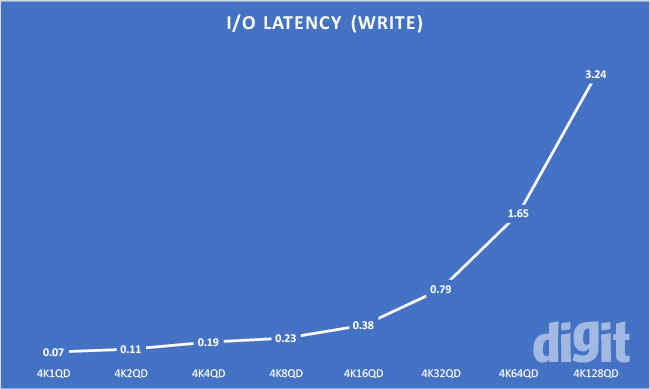
WD Blue SSD 250 GB Verdict
The WD Blue SSD offers good performance given that it is using TLC NAND but is about 600-700 bucks more expensive than other TLC SSDs in the price bracket. We’re talking sticker price here which for the 250 GB SKU is Rs.8,320 but you can find them online and at local retailers for roughly Rs.6,799. For something that’s an older SanDisk SSD with just newer branding, the price tag is a teensy bit higher. If you take that out of the picture, then the WD Blue SSD is a pretty good option in terms of performance.
Mithun Mohandas
Mithun Mohandas is an Indian technology journalist with 10 years of experience covering consumer technology. He is currently employed at Digit in the capacity of a Managing Editor. Mithun has a background in Computer Engineering and was an active member of the IEEE during his college days. He has a penchant for digging deep into unravelling what makes a device tick. If there's a transistor in it, Mithun's probably going to rip it apart till he finds it. At Digit, he covers processors, graphics cards, storage media, displays and networking devices aside from anything developer related. As an avid PC gamer, he prefers RTS and FPS titles, and can be quite competitive in a race to the finish line. He only gets consoles for the exclusives. He can be seen playing Valorant, World of Tanks, HITMAN and the occasional Age of Empires or being the voice behind hundreds of Digit videos. View Full Profile


